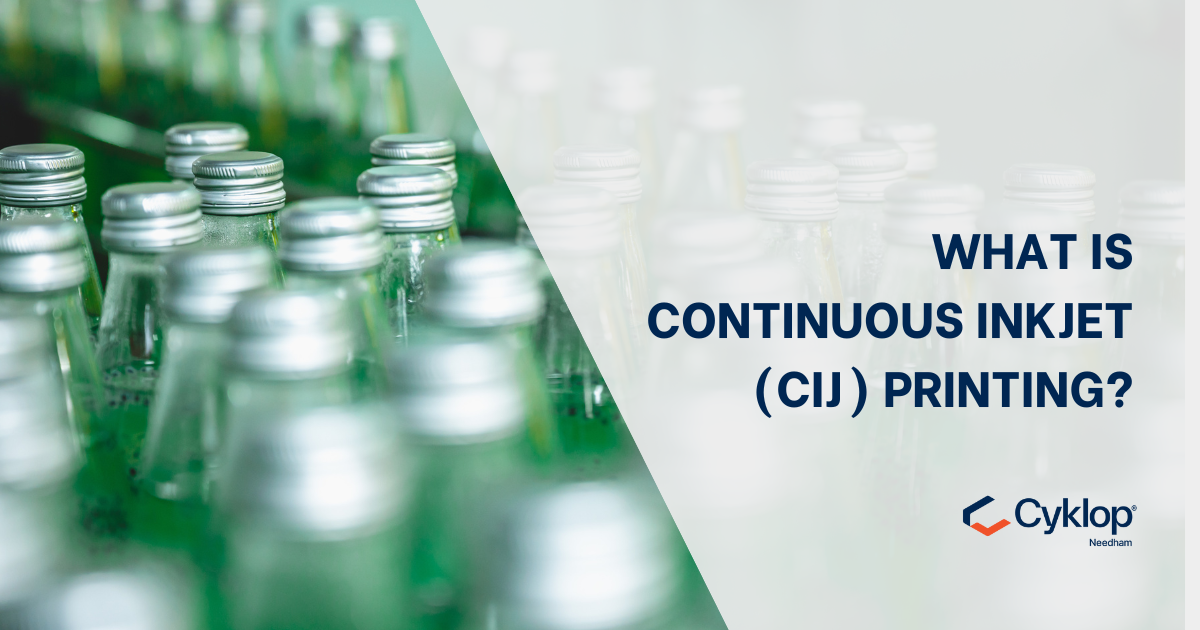CIJ Ink Explained: Composition, Benefits, and Why It’s Essential
Introduction: The Power Behind Continuous Inkjet Printing In the world of industrial printing, Continuous Inkjet (CIJ) technology stands as a pillar...

While inkjet printers are a common sight in homes and offices, a different class of technology powers the industrial world—Continuous Inkjet (CIJ) printing. It’s fast, reliable, highly versatile, and perfectly suited for non-stop production environments.
So, what exactly is CIJ technology, how does it work, and what makes it so valuable in manufacturing?
Unlike drop-on-demand systems used in office printers, CIJ printers use a continuous stream of ink droplets, controlled by electrostatic fields, to create precise and high-speed prints.
Here’s a step-by-step breakdown:
Ink Delivery: Ink is pumped from a central reservoir through a pressure regulator to a microscopic nozzle.
Vibration: A piezoelectric crystal causes ultrasonic vibrations, breaking the ink stream into tiny droplets.
Charging: An electrode applies a charge to select droplets.
Deflection: Charged droplets are deflected by a second electrostatic field onto the substrate (your product).
Recycling: Unused (uncharged) droplets are captured and returned to the reservoir for reuse.
This cycle happens continuously and at extremely high speeds—ideal for dynamic production lines.
CIJ systems use microscopic nozzles and fine droplet control, producing high-resolution prints with sharp, consistent detail. It’s even possible to print logos and small graphics with clarity across long production runs.
Designed for high-speed lines, CIJ printers dry on contact and operate continuously without stopping for product alignment—minimising downtime and boosting throughput.
CIJ printers like the CM750 from Cyklop Needham can code onto virtually any surface: paper, metal, plastic, wood, glass—even curved, textured, or moving substrates. They also work across multiple orientations and speeds.
Because the nozzle is always in use, ink is less likely to dry or clog. CIJ systems are built for long production runs with minimal intervention—ideal for environments where uptime is critical.
CIJ technology is widely used across a variety of industries:
Print expiry dates, batch numbers, and traceability codes on paper, foil, plastic, or glass packaging. CIJ is non-contact and hygienic, perfect for compliant food production.
Print tiny, legible part numbers and serial codes on delicate electronic components without damaging them—essential for traceability and regulatory compliance.
Print onto metal, rubber, plastic, and glass parts to support tracking, inventory control, and recall management. High-contrast, permanent codes help reduce assembly errors and improve product reliability.
From corrugated boxes to shrink wrap and flexible films, CIJ printers offer durable, fast-drying codes that resist smudging and handle transit and handling with ease.
At Cyklop Needham, we offer a powerful and reliable line of CIJ printers like the CM750, designed specifically for industrial manufacturing environments.
🛠️ Easy integration into existing production lines
🎨 Wide range of specialty inks including food-grade, UV-visible, fast-drying, and solvent-resistant options
🧠 Expert support from our in-house engineering team
🔄 High uptime and minimal service interruptions
Whether you need to print on packaging, components, or product surfaces, our CIJ systems deliver unmatched speed, consistency, and flexibility.
Continuous Inkjet technology has been a mainstay in industrial printing for over 40 years—and for good reason. It combines speed, precision, reliability, and adaptability, making it ideal for manufacturers that need high-quality coding at scale.
If you need to apply consistent, high-speed, legible marks or codes to products in real time—without the need for constant maintenance—then a CIJ printer is the smart solution.
📞 Call: +44 (0)1948 662629
📧 Email: enquiries@needham-ink.com
🌐 Website: www.needham-ink.com


Introduction: The Power Behind Continuous Inkjet Printing In the world of industrial printing, Continuous Inkjet (CIJ) technology stands as a pillar...

Low-MEK CIJ Inks: A Cleaner, Compliant Coding Solution At Cyklop Needham, we’ve expanded our portfolio with a versatile range of low-MEK continuous...

The Benefits of CIJ Ink for Marking Cables and Wires In sectors where clear and durable identification of wires and cables is essential—like...